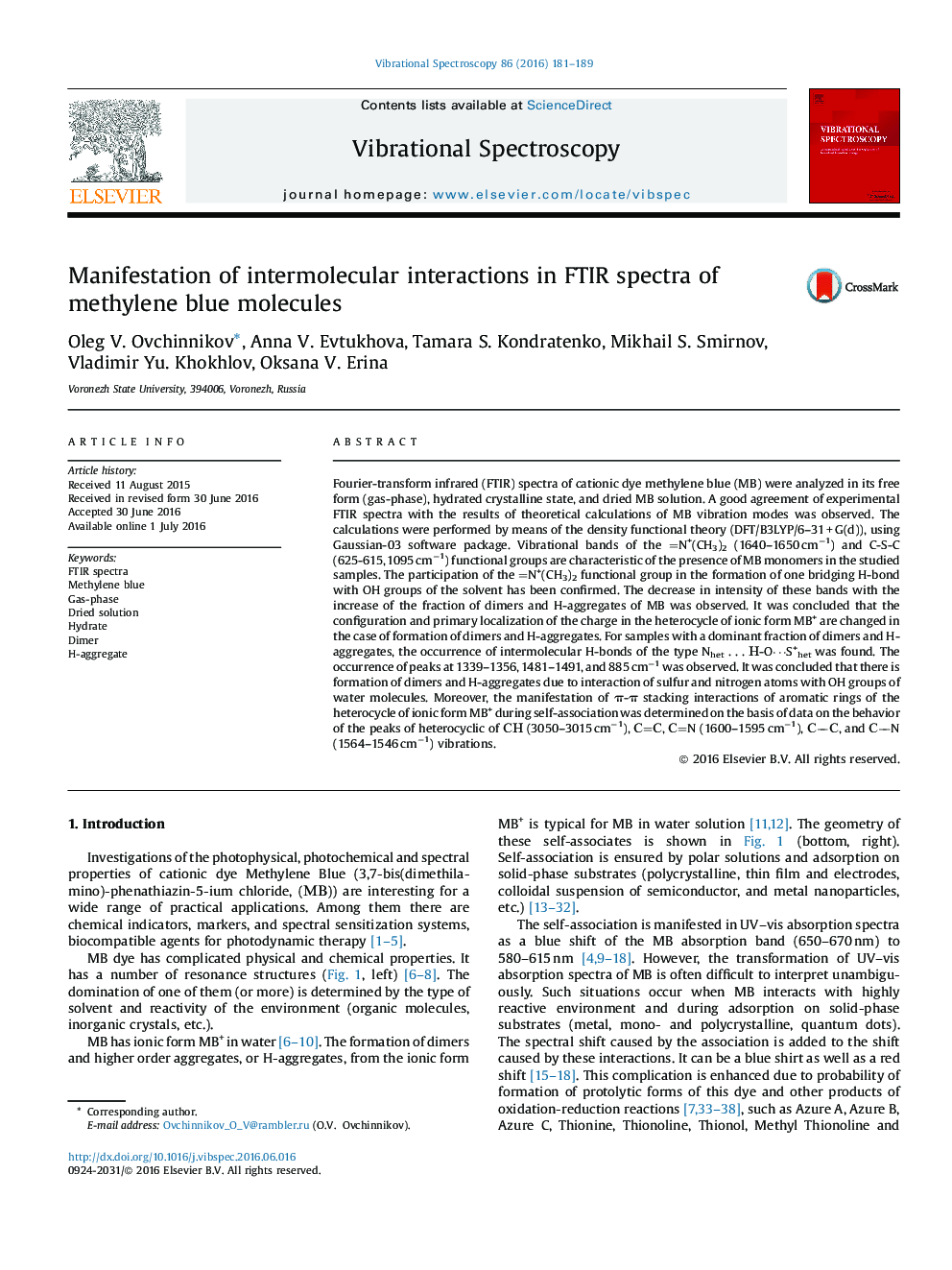| Article ID | Journal | Published Year | Pages | File Type |
|---|---|---|---|---|
| 1249518 | Vibrational Spectroscopy | 2016 | 9 Pages |
•FTIR spectra of Methylene Blue cation (MB+) were analyzed in their free form (gas-phase), hydrated crystal form and in solution.•The complications, emerging during the interpretation are due to the high activity of this molecule to the intermolecular interactions.•FTIR spectra of aqueous solution and hydrate show manifestation of dimerization and H-aggregation.•Intermolecular hydrogen bonds and π–π interaction of MB+ aromatic rings were observed during self-association.•The analysis of FTIR spectra indicates the identical nature of emerging intermolecular interactions for H-aggregates and hydrates.
Fourier-transform infrared (FTIR) spectra of cationic dye methylene blue (MB) were analyzed in its free form (gas-phase), hydrated crystalline state, and dried MB solution. A good agreement of experimental FTIR spectra with the results of theoretical calculations of MB vibration modes was observed. The calculations were performed by means of the density functional theory (DFT/B3LYP/6–31 + G(d)), using Gaussian-03 software package. Vibrational bands of the N+(CH3)2 (1640–1650 cm−1) and C-S-C (625-615, 1095 cm−1) functional groups are characteristic of the presence of MB monomers in the studied samples. The participation of the N+(CH3)2 functional group in the formation of one bridging H-bond with OH groups of the solvent has been confirmed. The decrease in intensity of these bands with the increase of the fraction of dimers and H-aggregates of MB was observed. It was concluded that the configuration and primary localization of the charge in the heterocycle of ionic form MB+ are changed in the case of formation of dimers and H-aggregates. For samples with a dominant fraction of dimers and H-aggregates, the occurrence of intermolecular H-bonds of the type Nhet…Н-O⋯S+het was found. The occurrence of peaks at 1339–1356, 1481–1491, and 885 cm−1 was observed. It was concluded that there is formation of dimers and H-aggregates due to interaction of sulfur and nitrogen atoms with OH groups of water molecules. Moreover, the manifestation of π-π stacking interactions of aromatic rings of the heterocycle of ionic form MB+ during self-association was determined on the basis of data on the behavior of the peaks of heterocyclic of СН (3050–3015 cm−1), СС, СN (1600–1595 cm−1), СС, and СN (1564–1546 cm−1) vibrations.
